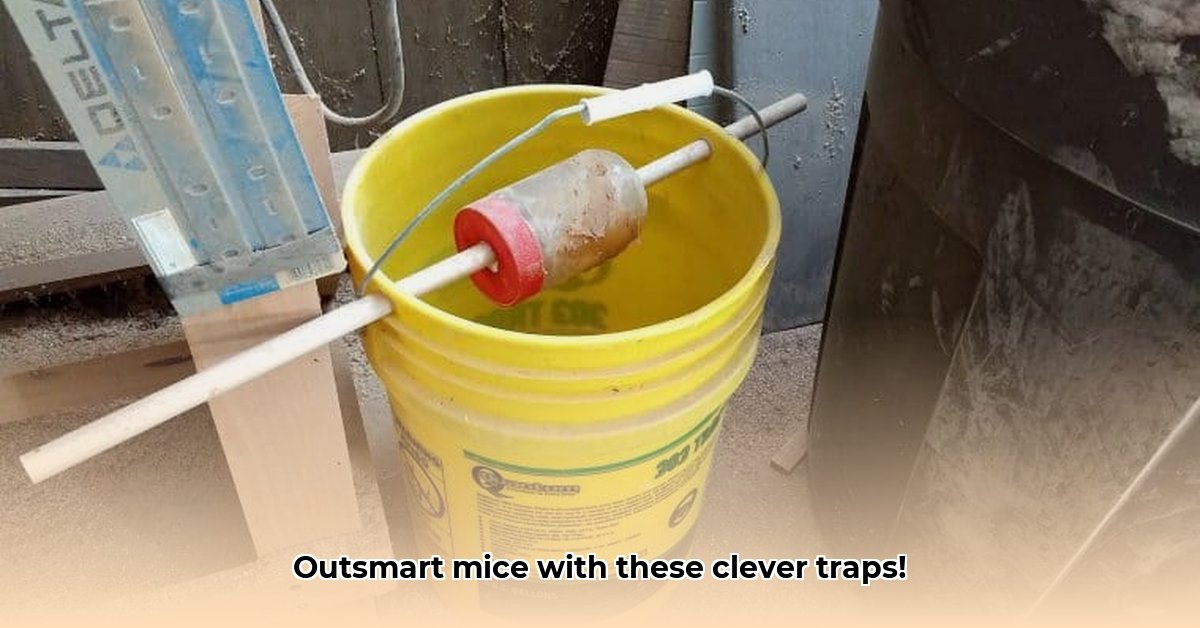
Rodents pose a significant threat to sustainable agriculture, causing crop damage and economic losses. However, responsible pest management prioritizes humane and environmentally sound methods. This guide details the effective use of bucket mouse traps, readily available at Tractor Supply, as part of a comprehensive Integrated Pest Management (IPM) strategy. For more information on similar pest control options, check out this helpful resource: Tractor Supply options.
Choosing the Right Trap: More Than Just a Bucket
Selecting the appropriate trap is crucial. Consider the size of the target rodent (mice require smaller openings than rats), the trap's material (durable, weather-resistant, and ideally recycled), and its design (live traps are more humane than snap traps). A multi-catch live trap allows for relocation, minimizing harm. Remember, responsible rodent control emphasizes ethical and safe practices alongside effectiveness. What type of bucket trap best suits your needs?
Setting Up Your Bucket Trap: A Step-by-Step Guide
Proper trap placement and baiting are vital for success. Observe rodent activity patterns (droppings, trails, gnaw marks) to identify high-traffic areas. Carefully follow these numbered steps:
- Strategic Placement: Position the trap along established rodent pathways.
- Effective Baiting: Use natural, non-toxic bait such as peanut butter, oats, grains, or small pieces of apple. Experiment to determine the most appealing option for local rodents. Avoid toxic baits which pose risks to wildlife.
- Secure Setup: Ensure the trap is stable and secure, preventing escape. For bucket traps, reinforce the ramp and bucket's stability.
- Regular Monitoring: Check traps daily, or more frequently if necessary, to prevent rodent suffering and allow prompt relocation.
- Responsible Disposal: Dispose of captured rodents according to local regulations—often by burying them at a safe distance or contacting animal control.
Eco-Friendly Baiting Strategies: Nature's Lures
Sustainable baiting is key. Prioritize natural options like grains, peanut butter, or fruits. Avoid commercial rodenticides, which harm non-target organisms and damage the environment. Isn't it better to protect the environment alongside your crops?
Beyond Trapping: A Holistic Approach to Rodent Management
A single method rarely suffices; a multifaceted IPM approach is most effective. Supplement trapping with:
- Habitat Modification: Remove clutter, debris, and food sources to reduce rodent shelter and attractants.
- Sanitation: Maintain cleanliness in storage areas and fields, minimizing food waste and spilled grain.
- Preventive Measures: Seal cracks and holes in buildings to prevent rodent entry.
Weighing the Pros and Cons: Bucket Traps in Perspective
Bucket traps offer advantages but also limitations. What are the ideal conditions for their use?
| Pros | Cons |
|---|---|
| Humane, avoids environmental damage | Requires consistent monitoring and maintenance |
| Cost-effective | May be less effective than chemical methods in severe infestations |
| Catches multiple rodents | Rodents may escape if the trap is improperly set up |
| Relatively easy to implement | Labor-intensive for large infestations |
Integrating Rodent Control into Sustainable Farming: A Holistic Strategy
Effective rodent management demands a holistic approach. Combining trapping with habitat modification, sanitation, and preventative measures creates a more resilient and sustainable system. Dr. Emily Carter, Extension Specialist in Sustainable Agriculture at the University of California, Davis, emphasizes that "A successful IPM strategy considers the entire ecosystem, minimizing negative impacts while maximizing effectiveness." This reduces reliance on harmful chemicals and promotes long-term environmental health. How can you adapt your farming practices to minimize rodent problems?
Key Takeaways:
- Humane rodent control is crucial for sustainable agriculture.
- Bucket traps provide an eco-friendly solution, easily accessible at Tractor Supply.
- A multi-pronged approach, integrating trapping and other IPM techniques, yields the best results.
- Consistent monitoring and responsible disposal are essential for ethical and effective pest management.
Additional Resources:
- [Your State's Department of Agriculture Website (insert link here)] – Find local guidelines on rodent control and IPM strategies.
- [National IPM Network (insert link here)] – Access comprehensive information on integrated pest management.
By implementing these strategies, farmers can effectively manage rodent populations while upholding their commitment to sustainable and ecologically responsible practices.